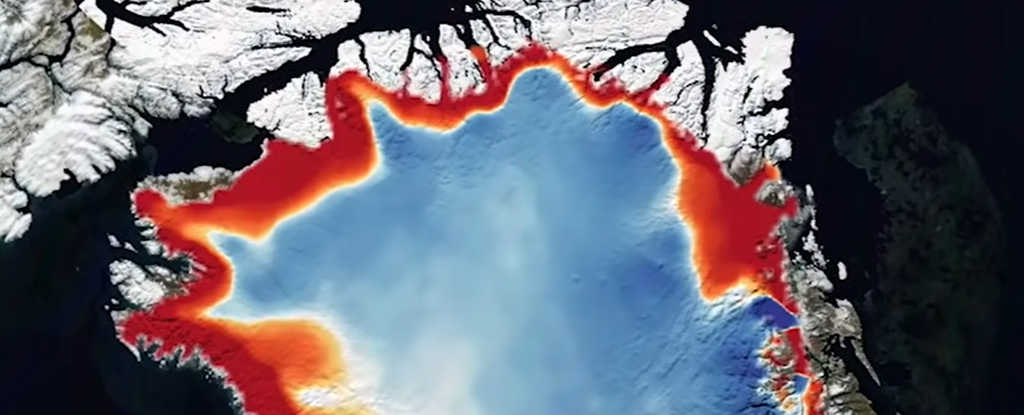Products You May Like
In a mocking fluke of physics, Greenland – one of the main sources of meltwater flooding Earth’s shores – is actually rising faster than the rising oceans.
The elevating bedrock is gradually birthing new land in Greenland’s sea including small islands and skerries, like Uunartoq Qeqertaq. Translating as ‘warming island’, this new 13 kilometer (8 mile) long landmass off the east coast of Greenland was officially recognized and added to Greenland’s maps in 2005.
“The land uplift we observe in Greenland these years cannot be solely explained by the natural post-ice age development,” explains Technical University of Denmark (DTU) geodesist Shfaqat Abbas Khan. “Greenland is rising significantly more.”
Greenland has been gradually rising since the last ice age 12,000 years ago, its frozen coat of water trickling slowly into the sea. But data recorded from 58 GPS stations across the country (GNET) reveals this melting has been significantly speeding up.
DTU geodesist Danjal Longfors Berg and colleagues found that in roughly the last decade Greenland’s bedrock has risen up to 20 centimeters (7.9 inches), which is a rate of about 2 meters (6.6 feet) per century.
“With our data from GNET, we can precisely isolate the part of land uplift caused by the current global climate changes,” says Khan.
While glaciers around Greenland’s periphery make up just 4 percent of the island’s ice cover, they’re responsible for almost 15 percent of its ice loss. It turns out this outsized decrease also contributes significantly to the land mass’s uplift.

Loss of mass from these outer glaciers is causing an even greater rise in some areas than the loss of the main Greenland ice sheet, due a process called elastic rebound.
This is where the previously compressed earth, now liberated from surrounding weight, relaxes into its more naturally expanded shape like a squashed pillow released to take up more volume.
Kangerlussuaq glacier in southeast Greenland, which has retreated 10 kilometers since 1900, aided in the largest uplift the team measured, equalling 8 millimeters per year.
While past studies had accounted for this process due to the loss of the main ice sheet, the peripheral ice hadn’t been fully factored in until now. Having a better understanding of the uplift will allow researchers to make more accurate sea rise estimates.
“These are quite significant land uplifts that we can now demonstrate. They indicate that local changes in Greenland are happening very rapidly, impacting life in Greenland,” explains Berg.
This odd phenomenon adds to a growing list of climate change’s astonishing, large-scale physical reshaping of our world. Previous examples include the shrinking of an entire layer of our atmosphere to the shifting of Earth’s axis.
We’re quite literally reshaping the Earth.
This research was published by Geophysical Research Letters.
